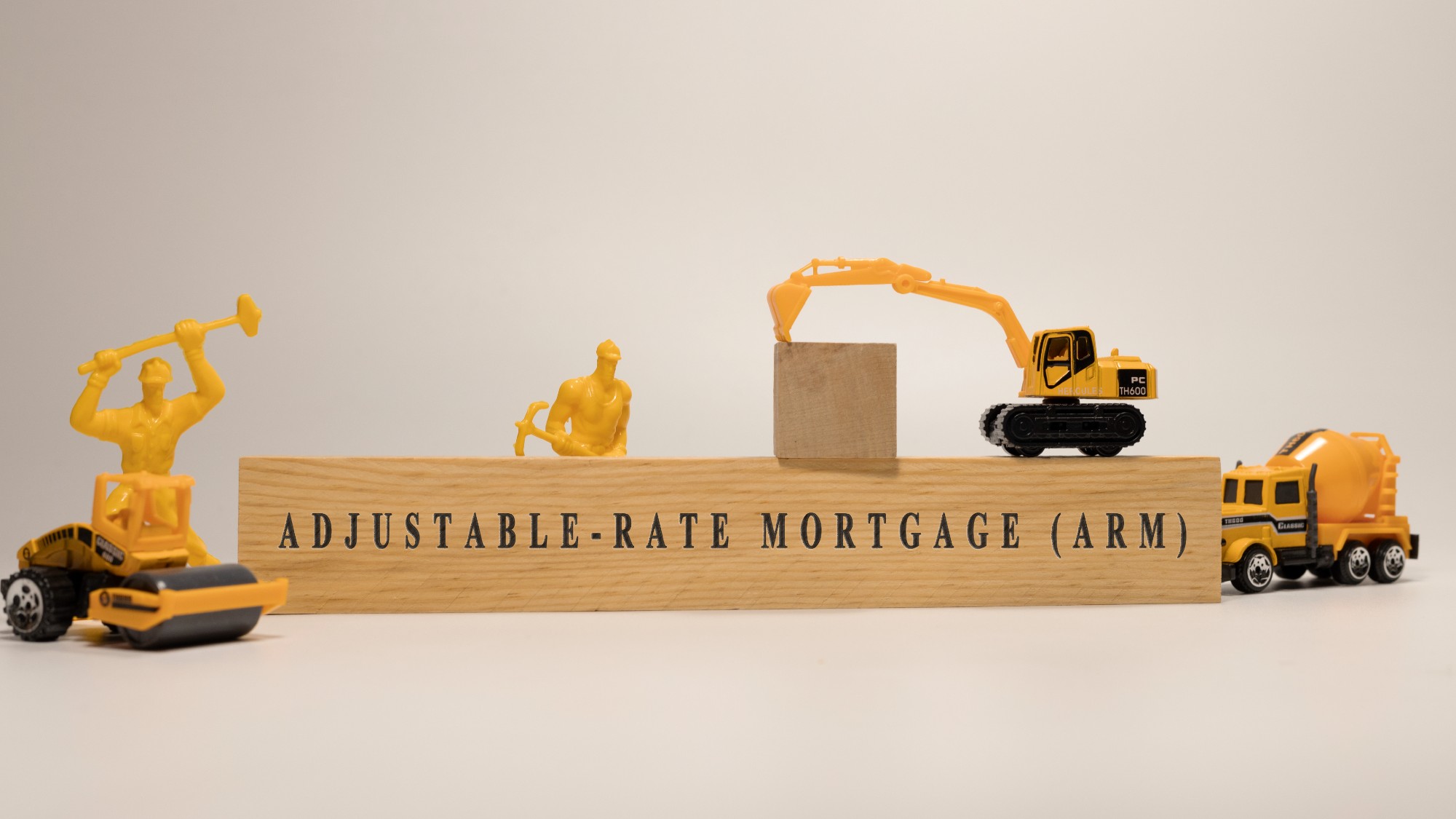What’s an adjustable-rate mortgage and what are the risks?
Buyers are increasingly willing to take the gamble of a changing rate


An adjustable-rate mortgage, or ARM, can seem like an enticing offer, as they often offer initially lower rates than the more standard fixed-rate mortgage. But later on, the rate is subject to change based on wherever mortgage rates head — and that certainly can be upward, leaving borrowers with higher payments as a result.
Still, more buyers are increasingly willing to take that gamble, given the current housing market that has left some “desperate for affordable monthly payments when home prices are up more than 50% since 2019 and are near all-time highs,” said The Wall Street Journal. Many people are accepting ARMs in the hopes that “mortgage rates will fall in the coming years, enabling them to refinance before the fixed terms of their ARM loans expire.” But there is no guarantee that will happen, nor is that the only risk of this type of mortgage loan.
How do adjustable-rate mortgages work?
An ARM has two periods: a fixed period and an adjustment period. During the fixed period, which usually lasts anywhere from three to 10 years, the interest rate on the loan does not change. After that, the adjustment period begins, when the rate can start changing, going either up or down based on market conditions.
The Week
Escape your echo chamber. Get the facts behind the news, plus analysis from multiple perspectives.

Sign up for The Week's Free Newsletters
From our morning news briefing to a weekly Good News Newsletter, get the best of The Week delivered directly to your inbox.
From our morning news briefing to a weekly Good News Newsletter, get the best of The Week delivered directly to your inbox.
These rate changes during the adjustment period typically occur every six or 12 months. When those intervals hit, “if there’s a drop in the benchmark index your lender selects when your ARM resets, your rate will go down,” whereas “if there’s an increase in that benchmark, that rate will go up,” said CNBC Select.
What are the risks of an ARM?
When the interest rate on your mortgage is changing periodically, it introduces uncertainty into your financial situation. There is always the chance that your rate will go up, which in turn will increase your monthly payments. Managing these swings requires some budgeting flexibility.
If, for whatever reason, you cannot afford the higher payments when they happen, “you could default, harm your credit and ultimately face foreclosure,” said Bankrate. Even if you can swing the steeper payments, you could “end up paying more overall for an ARM than if you’d initially taken out a fixed-rate mortgage instead,” even if the initial rate was lower in comparison, said Rocket Mortgage.
Plus, securing an ARM in the first place is potentially “more difficult” than a fixed-rate mortgage, as “you’ll need a higher down payment of at least 5%, versus 3% for a conventional fixed-rate loan,” said Bankrate.
A free daily email with the biggest news stories of the day – and the best features from TheWeek.com
When can an adjustable-rate mortgage make sense?
Despite the risks, an ARM can be a “smart financial choice if you are planning to keep the loan for a limited period of time and will be able to handle any rate increases in the meantime,” said Investopedia. For instance, if you “expect rates to drop before your ARM rate resets, taking out an ARM now, and then refinancing to a lower rate at the right time, could save you a considerable sum of money,” said Bankrate.
Additionally, said Bankrate, for those “planning to sell before the fixed period is up,” such as buyers who are purchasing their starter home and soon plan to upgrade, an ARM “can save you a bundle on interest.”
Becca Stanek has worked as an editor and writer in the personal finance space since 2017. She previously served as a deputy editor and later a managing editor overseeing investing and savings content at LendingTree and as an editor at the financial startup SmartAsset, where she focused on retirement- and financial-adviser-related content. Before that, Becca was a staff writer at The Week, primarily contributing to Speed Reads.
-
 The history of US nuclear weapons on UK soil
The history of US nuclear weapons on UK soilThe Explainer Arrangement has led to protests and dangerous mishaps
-
 Tea with Judi Dench: ‘touching’ show is must-watch Christmas TV
Tea with Judi Dench: ‘touching’ show is must-watch Christmas TVThe Week Recommends The national treasure sits down with Kenneth Branagh at her country home for a heartwarming ‘natter’
-
 Codeword: December 24, 2025
Codeword: December 24, 2025The daily codeword puzzle from The Week
-
 Received a gift card this holiday season? Here’s how to maximize it.
Received a gift card this holiday season? Here’s how to maximize it.The Explainer Make the most of your present
-
 Who will the new limits on student loans affect?
Who will the new limits on student loans affect?The Explainer The Trump administration is imposing new limits for federal student loans starting on July 1, 2026
-
 3 ways to reduce the cost of owning a car
3 ways to reduce the cost of owning a carthe explainer Despite the rising expense of auto insurance premiums and repairs, there are ways to save
-
 How to shop smarter with a grocery budget
How to shop smarter with a grocery budgetThe Explainer No more pushing your cart down the aisles on autopilot
-
 What will next year’s housing market look like?
What will next year’s housing market look like?The Explainer Here is what to expect from mortgage rates and home prices in 2026
-
 What are the pros and cons of a Roth conversion for retirement?
What are the pros and cons of a Roth conversion for retirement?Pros and Cons By converting a traditional IRA to a Roth IRA, retirees can skip paying taxes on their withdrawals
-
 4 easy tips to avoid bank fees
4 easy tips to avoid bank feesThe Explainer A few dollars here and there might seem insignificant, but it all adds up
-
 4 often overlooked home maintenance tasks that could cost you later
4 often overlooked home maintenance tasks that could cost you laterThe Explainer A little upkeep now can save you money down the road
